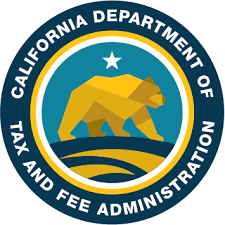CDTFA envisions a solution to support tax return analysis that will increase tax return processing accuracy and efficiencies to provide timely tax compliance advice and actions.
The State of California is seeking a solution that would meet the following needs:
1. Accuracy Requirements
- Ability to provide third party data in real-time or close to real-time on California businesses activities/transactions.
- Detailed business activity information at the account level and site location.
- Current and accurate North American Industry Classification System (NAICS) code(s) for the account and each site location.
- Site location type (e.g., store front, corporate office, warehouse, etc.).
- Business entity (Owner Name).
- Business entity type (Individual, Corporation, Partnership).
- Business location (latitude and longitude Geospatial Information System (GIS) coordinates to be stored for each location site); to know the exact undisputed geographical business location.
- Business name (Doing Business As [DBA]) or legal entity name.
- Business or mailing address; to know the exact business address to reconcile or validate business account registration records.
- Business recently sold, closed out, or changed ownership.
2. Efficiency Requirements
- Ability to create attribute or indicator to categorize accounts by specific business activities and tie the attribute or indicator to current NAICS code.
- Ability to convert current and new business activity data accurately into a NAICS code or equivalent.
- Ability to provide key business identifications: Tax ID, Seller's Permit, Occupational License, or internal entity record number, etc.
- Ability to provide business banking information.
- Ability to identify business owners, officers, members, or partners.
- Ability to provide an alternative to business NAICS codes identifiers.
- Ability to provide retail space or maximum seating information.
- Ability to provide information on new building permit applications and their subsequent status to completion for all California cities and counties.
- Ability to provide other identifications from other government entities: Social Security Number, Driver License, Federal Employer Identification Number (FEIN), Secretary of State ID, or State Employer Identification Number (SEIN).
- Ability to model selected business types (e.g., gas station, grocery story, bakery, restaurant, etc.) by geographical parameters (e.g., zip code, city, county, etc.).
- Ability to determine if the business owner’s current permit accurately covers the current business activity.
3. Tax Advice and Actions Requirements
- Ability to identify a selected business entity and determine if their business activities, account characteristics/indicators qualify them to claim exemptions and deductions on their returns.
- Ability to automate the process of identifying information that needs to update taxpayers’ registration.
- Ability to identify tax return anomalies and/or patterns to assist staff determining target areas of non-compliance and how to address these issues with taxpayers.
- Ability to recognize clustered patterns useful in categorizing businesses behaviors.
- Ability to provide data analytics to analyze CDTFA tax returns and/or tax return data, using a variety of technologies that may include Artificial Intelligence, Machine Learning and algorithms.
- Ability to identify criteria to evaluate returns and assign a confidence or probability score.
- Ability to identify industries with high likelihood of underreporting taxes.
- Ability to Identify returns with repeat errors.
4. General Requirements
- Ability to handle batch job submissions.
- Ability to interface with CDTFA’s ESRI GIS platform (e.g., to use current and historic tax rate GIS maps).
- Ability to interface with CDTFA’s CROS tax revenue platform, GenTax.
- Provide users access to the data for querying, data analysis and reporting.
- Provide the ability to display, track, and analyze Key Performance Indicators (KPIs), metrics, and data points.
- Allow team members to pull items from the work queue.
- Generate workflow items, after tax returns are flagged, that include taxpayer communications (e.g., system generated notices or letters to taxpayers to correct return).
5. Information Security Requirements
- Cloud based solutions must comply with the Cloud Computing Policy within State Administrative Manual (SAM) Sections 4983-4983.1, and employ the capabilities outlined in Cloud Security Standard, Statewide Information Management Manual (SIMM) 5315-B.
- Cloud based solutions must Federal Risk and Authorization Management Program (FedRAMP) compliant. In case of FTI involvement, the system must be FedRAMP certified.
- The solution must encrypt data in transit and at rest while the vendor maintains the encryption key and stores the data on a domestic server.
- The solution must keep confidential, sensitive or Personal Information (PII) encrypted in accordance with California State Administrative Manual (SAM) 5350.1 and California Statewide Information Management Manual (SIMM) 5305-A.
Constraints
The current solution to support tax return analysis is constrained by the following:
- Data matching to other data sources is done manually outside of CROS currently.
- Data is not documented (i.e., no metadata, no data model, and no Entity Relationship Diagram). In CROS, it is documented at the field level.
- Data is not aggregated in a repository that can be used for querying and analytics outside of CROS. In CROS, it can be queried if the data is available.
- Custom in-house tools are stand alone, not enterprise level, hard to configure, maintain, and integrate with other applications.
- The only way to get data into and out of our current tax return processing system is via extract, transform, and load (ETL).
- It is difficult to analyze large volumes of data.
